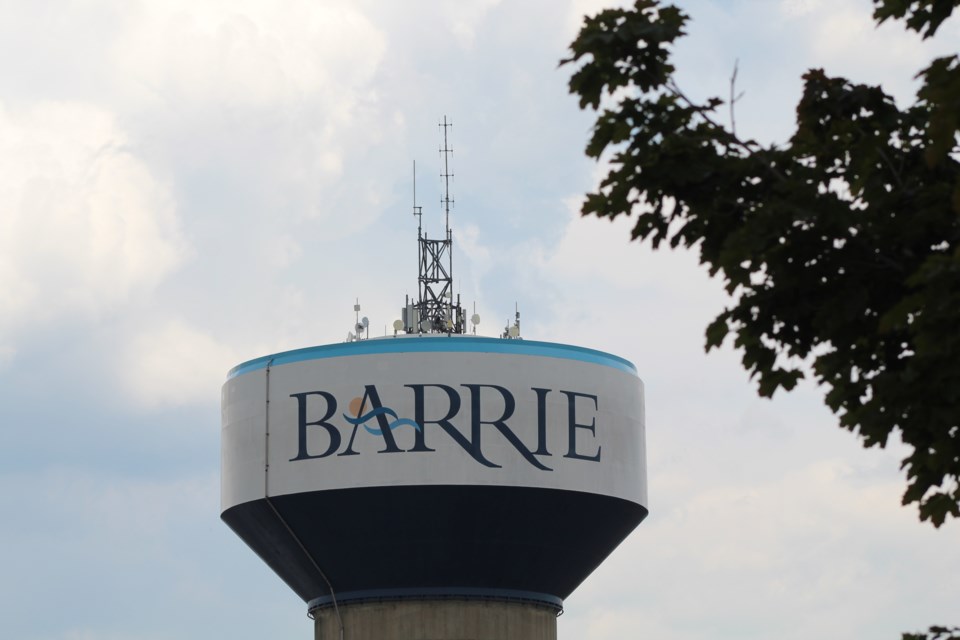If we build it, they will come.
The city's six new infrastructure master plans considered at the council table last week are the most important documents council will see for a while, according to Barrie Mayor Jeff Lehman.
The plans, which map infrastructure growth in new areas of the city until 2041, come with an eye-popping price tag of $2.9 billion.
“It’s setting the plans for the next 22 years of public works. So, where are the roads? Where are the pipes? What are we going to do about water?” Lehman said in an interview with BarrieToday.
The 2017 Provincial Growth Plan permits the City of Barrie to plan for a population of 253,000 by 2041, and Lehman says he wants to correct some of the mistakes of the past by being prepared this time around.
“This level of growth sounds like a lot – and it is – but it’s not something completely out there that we’ve never seen what that looks like,” said Lehman.
“I really want to make sure we don’t make some of the mistakes that happened last time. They weren’t really the fault of city council or anyone else last time," the mayor added. "They just weren’t able to build fast enough... to support that growth."
The six infrastructure master plans related to growth in the City of Barrie for 2019-41 were for water supply, water storage and distribution, wastewater treatment, wastewater collection, drainage and transportation.
“The challenge we have now is going to be ensuring that growth pays for growth so we don’t end up behind on infrastructure,” said Lehman. “You can make plans all you want. If you don’t actually build the stuff that’s in the plans, you end up with situations like Mapleview (Drive).”
Lehman says that traffic snares on Mapleview Drive in the south end of Barrie were caused by best-laid plans going to waste.
When the last annexation occurred in the mid 1980s, the south-end land, including Mapleview Drive, was brought into the City of Barrie.
“The issue was not that the planning didn’t get done. The planning did get done then. They did master plans then (for that area) the way we’re doing them now. What they didn’t do is stick to them,” said Lehman.
Mapleview was planned to be an industrial area, the mayor says.
"Drive around there now, it’s not an industrial area. It’s one of the biggest shopping districts in central Ontario,” he added.
Lehman sees the traffic issues on Mapleview and the surrounding area over the past 10 years as a warning.
“If... you let development go so fast that the infrastructure can’t keep up with it, then you’re going to generate these kinds of problems,” he said. “I really want us to get it right this time. That means, we’re going to need the province to help us out, and we’re going to need to build the infrastructure now, not put it off.”
Lehman says current residents shouldn’t fret about having to foot the bill, as the $2.9 billion is anticipated to come, for the most part, from development charges for the new growth.
“The growth-related money is 100 per cent from development charges. There is some work – particularly from transportation – that has what’s called existing benefits,” he said. “There’s a calculation of how much other projects – such as widening Mapleview, for example – fees comes from development charges, and how much comes from the existing tax base.”
Lehman says the addition of the drainage master plan (or stormwater) will be the first time the city has had one drainage master plan to cover multiple watersheds across the city.
“It was made necessary by the fact that we had so many Kidd’s Creek-type problems where we have water courses that run underneath the city and in older neighbourhoods,” said Lehman. “With climate change, it rains more often and more heavily and it rains in the winter. It didn’t used to rain in the winter as much. Now, we have flooding. That flooding is becoming a much higher priority for us because it’s dangerous, but it also causes huge damage to properties.”
The master plan that comes with the largest cost is transportation, with $2 billion going toward road network improvements, active transportation improvements (pedestrian and cycling networks), trails, and transit. The 2019 transportation master plan includes the city’s first ever trails master plan.
There were two letters attached to the council agenda, from agents representing developers with land in both the Hewitt and Salem Secondary Plan areas in the south end, who felt that two months to review the master plans wasn’t enough time.
“These studies are integral to setting of the development charge. They are substantial documents and have only been available for public review and comment for a limited amount of time,” wrote Chris Barnett, an agent for Barrie Lockhart Road GP Inc.
“I do understand that it’s very complex. I think two months isn’t a short amount of time,” said Lehman. “I can understand their request for more, and we do want to go back and forth with the developers to make sure everybody knows exactly what we’re doing. But, the bylaw expires in August. So there’s not a lot of extra time even if we wanted to provide it.”
“It’s also important for our taxpayers that we get the new bylaw moved along. I don’t think we’re doing anything unusual,” said Lehman.
The proposed new bylaw will be up for discussion at the next meeting of city council.
For more information on the Infrastructure Master Plans, click here.
Cost breakdown of each master plan
- Water Supply - $9.2 million
- Water Storage and Distribution - $110 million
- Wastewater Collection - $125 million
- Wastewater Treatment - $378 million
- Transportation - $2 billion
- Drainage - $242 million



